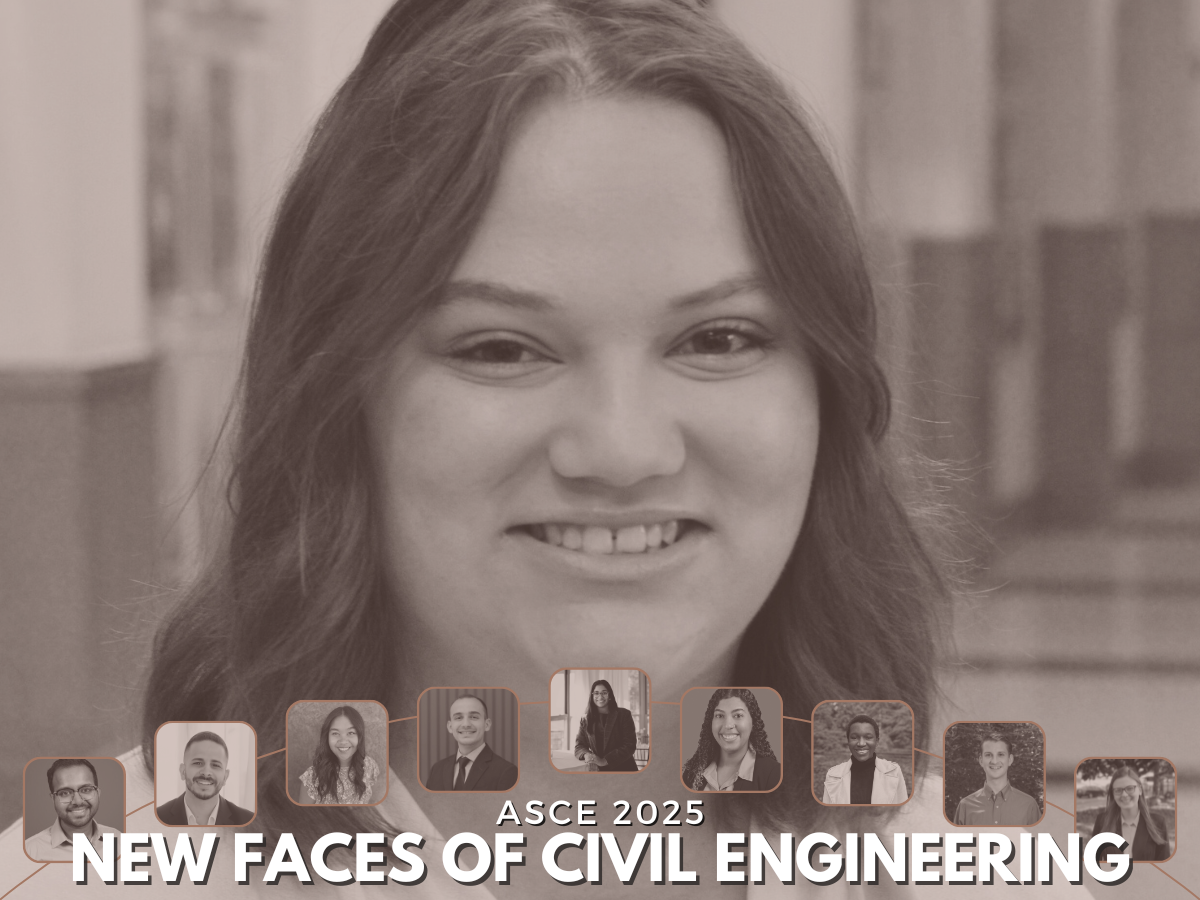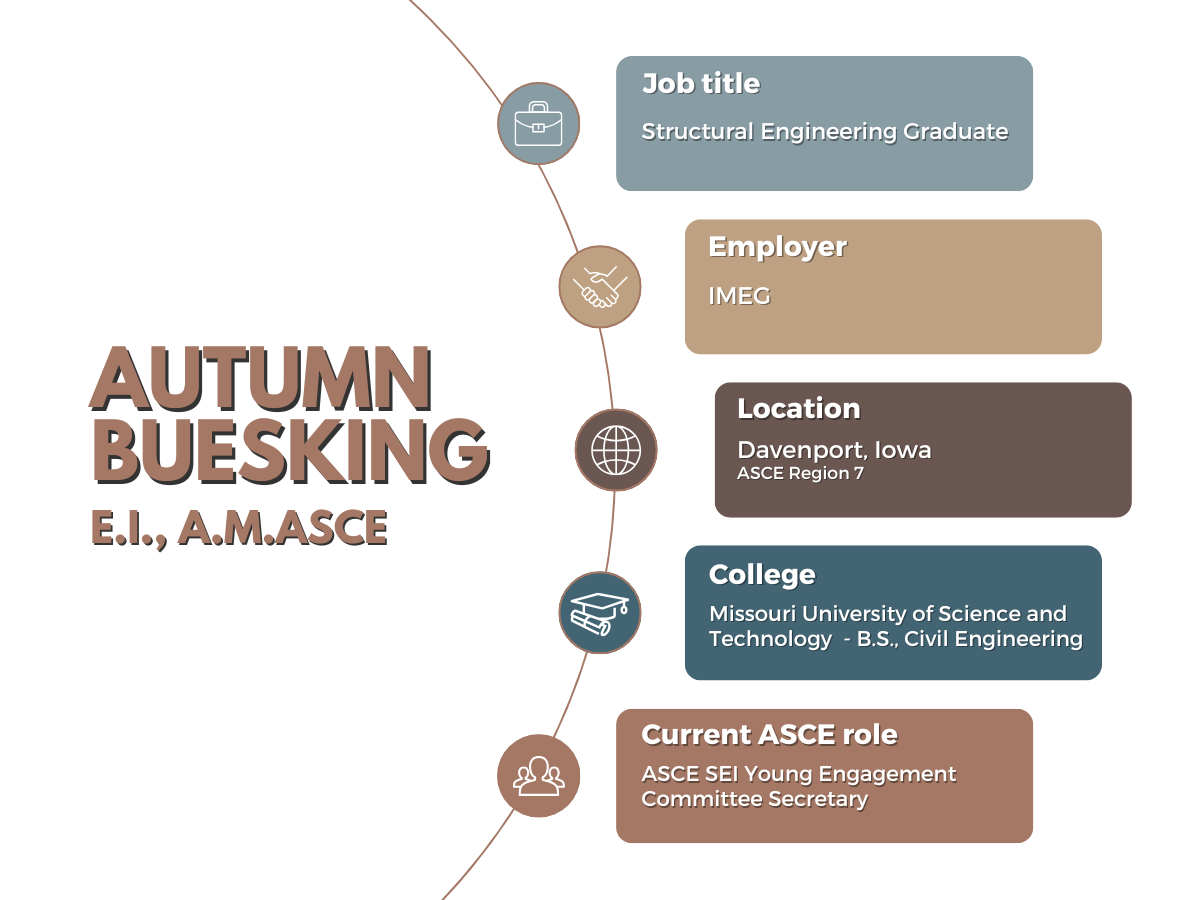

Autumn Buesking has a photo of an old friend hanging up at her office cubicle.
Well, maybe "friend" isn’t quite the right word.
It’s a lovely black-and-white photo she took of the old Washington Bridge, a rusty old cantilever truss bridge crossing the Missouri River in Buesking’s hometown of Washington, Missouri, on a hazy, foggy morning just before it was set to be demolished and replaced.
If not a friend to Buesking (she was actually pretty scared to drive over the bridge near the end of its life because it had gotten so dilapidated), the Washington Bridge was a constant civil engineering presence throughout her childhood.
It was there when she was in kindergarten, competing with her classmates in Penny Wars to help raise money for its replacement.
And it was still there when she was in middle school, connecting spaghetti sticks with hot glue in a "Design the New Washington Bridge" contest.
And, yes, it was still there when she was a senior in high school in 2017 and the Missouri River flooded into her hometown, causing a lightbulb to go off in her head.
"My school district was really unique in that half is on one side of the river, half is on the other side. The hospital is also right off the bridge," Buesking said. "So this bridge is very functional. The roads to the bridge flooded, and no one could get across the river. Our school shut down. People couldn’t get to the hospital. People were driving 45 minutes out of their way just to get to work."
"It really made me start to wonder why we didn’t have better flood protection and why we didn’t have a new bridge. It makes you realize just how important that bridge actually is."
Not long after, Buesking started working toward her civil engineering degree at Missouri University of Science and Technology.
And not long after that, the city finally got the long-sought Washington Bridge replacement – an improvement for the people of Missouri and forever a symbol of Buesking’s civil engineering origin story.
No wonder she still has the photo on her desk.
"Obviously, I didn’t engineer any part of that bridge, but it was integral to my childhood," Buesking said. "Eighteen years of my childhood to get from where people were saying, 'Hey, this is not passing inspection. It needs to be replaced,' to finally opening the new bridge.
"It was so cool to see from start to finish. I think that really put me on a path to civil engineering. I’m not sure that people realize how much work and time went into that bridge replacement process. But I was there every step of the way."
Buesking now works as a structural engineering graduate for IMEG in Quad Cities, Iowa, where she’s also active with the ASCE Quad Cities Section, the ASCE Structural Engineering Institute Young Professional Engagement Committee, and several other volunteer organizations.
ASCE has honored Buesking as a 2025 New Face of Civil Engineering. She recently talked with Civil Engineering Source about her career.
Civil Engineering Source: What is the accomplishment or aspect of your career you are most proud of so far?
Autumn Buesking: I think the thing I’m most proud of is seeing my work and the work of my co-workers helping the community.
I’m lucky enough to have been able to design a lot of really great projects, whether it’s schools, community buildings, or hospitals, that benefit the surrounding area.
Seeing those projects go from 2D on paper to 3D models to actually existing in the world, it’s really awesome. I love those ribbon-cuttings and groundbreakings where you see how excited the community is for the project. Knowing that it really benefits people is something that I’m really proud of.
Source: What are some specific projects that come to mind?
Buesking: One that really stands out to me is called The Landing. It’s an ice rink and pool for the city of Bettendorf (Iowa), which is about 20 minutes away from me.
They had an existing pool and an ice rink they would put up temporarily. But they needed to upgrade the pool and add some water slides and make the ice rink permanent. So that was a really fun one.
It was a very challenging project engineering-wise, just with some different materials, but it turned out so great. They just had the ribbon-cutting a few weeks ago with a Christmas tree lighting ceremony, and there were a lot of people out for that.
Another one I’ve done is an elementary school. That one is under construction now, and it’s a pretty big project. They brought all the students from the old elementary school out to the new one for the groundbreaking. They gave them all plastic hard hats, and they got to see where their new school is being built. A bunch of the students gave speeches. So, it’s rewarding to see that direct impact that that building is going to have on those students and future students.
Source: What motivates all that you do for the community?
Buesking: Yes, I’m pretty involved with the community. Whether it’s our local ASCE Section or Junior Achievement or the United Way Emerging Leaders program, I get to go into classrooms and teach students about how community works.
The Emerging Leaders program has been really unique. It focuses on our young professional development, but then it also focuses on community development and what young professionals can do for the community. We volunteer at schools, asking students about the future of our area and what future needs may be. We’re also focused on improving college readiness for high school students in our area.
Getting to give back that way is really awesome.
I never had that engineering role model when I was younger. My parents both worked in the medical field, so I didn’t know anything else.
So I like to spark that interest in kids who may want to be engineers, being that voice telling them that they can achieve whatever they want to achieve. That’s really what got me into community involvement, and then it kind of branched out from there.
I’m always willing to help out. I don’t like saying no. Just being there for others is something that brings me a lot of joy.
Source: What kind of impact do you want to make on the profession?
Buesking: I don’t want to put myself in a box or put engineering in a box.
I think something great about engineering is that it’s always changing and developing. Ten years from now I want to be known as someone who transitioned well from being a young leader to a professional leader in the industry. But I don’t want to limit myself to a specific path. I want to be able to grow as needed. I want to be on the front lines, paving the way for what the future will look like.
One of my strengths is quick-start. That’s what we call it where I work.
Our company has everyone take different personality tests. One is called your Kolbe score. There are different categories. And I tested very well with quick-start, which is pretty rare among engineers.
A lot of engineers are factfinders. They want to know all the details and all the numbers before they start. There’s not a lot of people in the engineering industry who can just dive right in.
But I’m very much like, “Let’s just get started with what we can do right now to make this better.” And I think that also plays into volunteering and a lot of the committees I’m on.
I’m just a "yes" girl. I’m there. I’m ready to go, ready to help out. Where do you need me? What do you want me to do? You don’t have to ask me twice.
So, I’m very much looking forward to using that quick-start ability to help the industry in the future.



